|
Pulpitis is inflammation of the tooth pulp. The pulp consists of blood vessels, nerve endings, lymphatics, and connective tissues. The most common cause of pulpitis is traumatic force to the tooth. These are a few things that will fracture the tooth exposing the pulp cavity. Antlers and bones are too hard for your pets teeth. If you were to take the item and you hit it against your knee and it hurts you, it will hurt your pet too. Tooth on tooth contact is called attrition and this can wear down the enamel and dentin exposing the pulp. Tennis balls are another culprit that can wear down the teeth. Dogs who chew on rocks are also at risk. These are what I would recommend for alternatives. Pet owners can look at their cat and dogs teeth and if you see a red or black dot on the tooth shown by the green arrow, your pets pulp is exposed. Once the pulp is exposed it is only a matter of time for bacteria to go into the dot and cause lots of inflammation and potentially infection. That can cause a root abscess which is extremely painful. The inflammation in the pulp chamber increases pressure and restricts blood flow essentially causing the tooth to painfully die. If the core of the tooth is damaged and the tissues are dead it will turn purple which is seen by the red circle and that is a for sure sign of pulpitis. We would recommend this tooth be removed. There is often an inclination to tell owners to simply “keep an eye on it.” But because these pets are often in pain, a wait-and-see approach won't cut it because we strive to provide high-quality patient care.
0 Comments
Lily came in for a COHAT which is a comprehensive oral health assessment and treatment because she had bad breath and started to eat slower than before. We did full mouth X-rays, scaling and polishing for her. She did not need any of her teeth removed thankfully. Some indications that you should book your pet in for a dental are bad breath, tartar, bleeding gums, loose teeth or discoloured ones, difficulty eating and a sore mouth. Dental disease can be very painful for our pets and of course they are going to continue eating because they have to in order to survive. By age three 70% of cats and 80% of dogs have some form of dental disease and we are able help keep your pets mouth healthy. If you book a dental for February, you will receive 10% off your pets dental exam and charting, full mouth X-rays, scaling and polishing. We only have eight available appointments.
If you do not look in your pet's mouth you are not the only one but you should definitely start. You can notice not only what a normal mouth looks like but you can also start to recognise the first stages of dental disease before it gets worse and becomes expensive to treat. 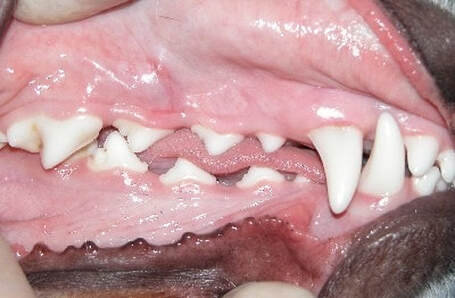 This appears to be a healthy mouth above the gum line. This is what we, as pet owners, strive to keep our pets mouth's looking like. 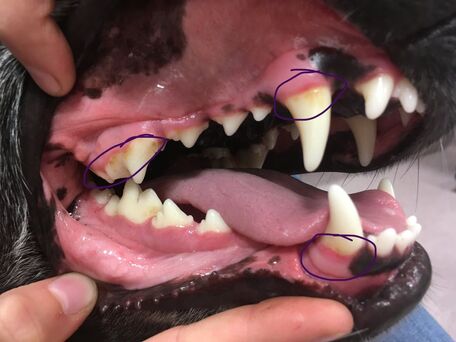 Mild gingivitis is shown on both canine teeth and tartar is forming on all circled teeth. Red gums are an inflammatory response to the bacteria from the tartar that is close to the gum line. We want to prevent this stage of dental disease with home care like tooth brushing, oral rinses, and dental chews. If no home care is done it will lead to the next stage of dental disease. 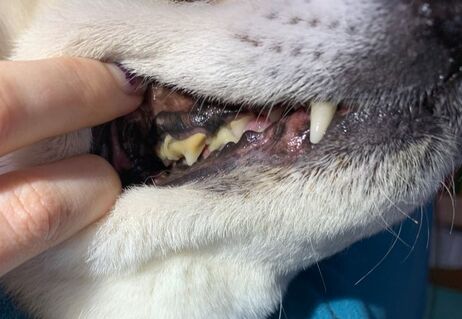 In this case, more tartar is covering that back tooth. The gums are black so it is difficult to determine the amount of gingivitis. In this stage of dental disease less than 50% of the teeth have tartar on them. Tartar can not be brushed off so at this point it is important to insure that the other teeth and gums are getting some TLC. 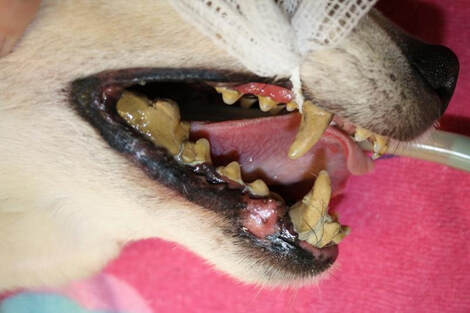 This stage of dental disease is extremely dangerous for your pet. This amount of bacteria in your pet's mouth can increase their risk of heart, liver, and kidney infection from bacteria getting in to the bloodstream. At this point treatment would be a Comprehensive Oral Health Assessment and Treatment (COHAT). This would include: dental xrays which will determine the integrity of the teeth, tooth scaling, tooth polishing, and likely tooth extractions. This all looks a little "Doom and Gloom", If we are able to continue to look in our pet's mouth, do basic cleanings, and maintain general oral care we can be assured that we are helping! Dental disease is a diagnosis made by a Veterinarian. There are different stages that vary from mild to severe. Dental disease in your pets is something to not take lightly. There is lots of bacteria in the oral cavity that can get into the pets blood stream and this can lead to a compromised immune system, organ infection, shorter lifespan, and unimaginable pain. Signs of dental disease consist of bad breath, sore mouth, difficulty eating, loose teeth or tooth loss, pawing or rubbing the mouth, bleeding gums, tartar on the teeth, discoloured teeth, and red inflamed gums. February is dental month and it would be beneficial to bring your pet in for a Tech Consult. During this consult, I will talk more about dental disease and go over affordable and realistic ways you can help your pet feel, look, and smell better! You will also go home with a swag bag that is specifically customised for you and your pet to help with proper dental home care.
February 2019, I had come home from college and the first thing I realized was Luna had terrible foul smelling breath. I opened her mouth to look inside, as any good pet owner would, and found a pink mass between her front teeth. I remember thinking, "how could I have missed this". I was very worried and did not want my dog to be in pain. I called the Vet to book an appointment to get this looked at. The Vet did a biopsy and sent that away. The results came back as Plasmacytoma which is a benign tumour that is very fast growing and had the possibility of impacting the bone. This news was very scary. I wanted the best for Luna especially because she was only five years old. I got referred to a dental specialty clinic for a consultation and the treatment of choice was to remove her top right and left canines and all teeth in between. The teeth and surrounding tissue was sent to a histopathologist and Luna was diagnosed with gingival hyperplasia and lymphoplasmacytic gingivitis. That means that her gums (gingiva) were swollen and red because of a reaction to the tartar on her teeth. After the surgery Luna was sent home with some pain medication, soft food, and oral rinse. She had to eat soft food for a few days so that her stitches would not rip out. After Luna's stitches dissolved I was instructed to brush her teeth using the oral rinse they gave me. Luna did not enjoy this process but she never growled and I knew it was going to help prevent this happening again. She got used to me brushing her teeth faster then I would have thought. It is a good idea to start brushing your pet's teeth early in life so then they get used to it. It also prevents dental disease which is extremely painful. Having your pet used to it's mouth being handled helps the Veterinarian when they need to look inside their mouth during any regular physical exam and if your pet ever needs to take pills.
|
Ashlyn, RVTJoin me in learning a few tips about being the best owner that you possibly can be. Archives
September 2022
Categories |
Phone | 780-554-0663 | Fax | 780-348-5540 [email protected]
Enter "Stone Ridge Vet" into Google or Apple Maps
59525 Range Road 235, Westlock County
Enter "Stone Ridge Vet" into Google or Apple Maps
59525 Range Road 235, Westlock County

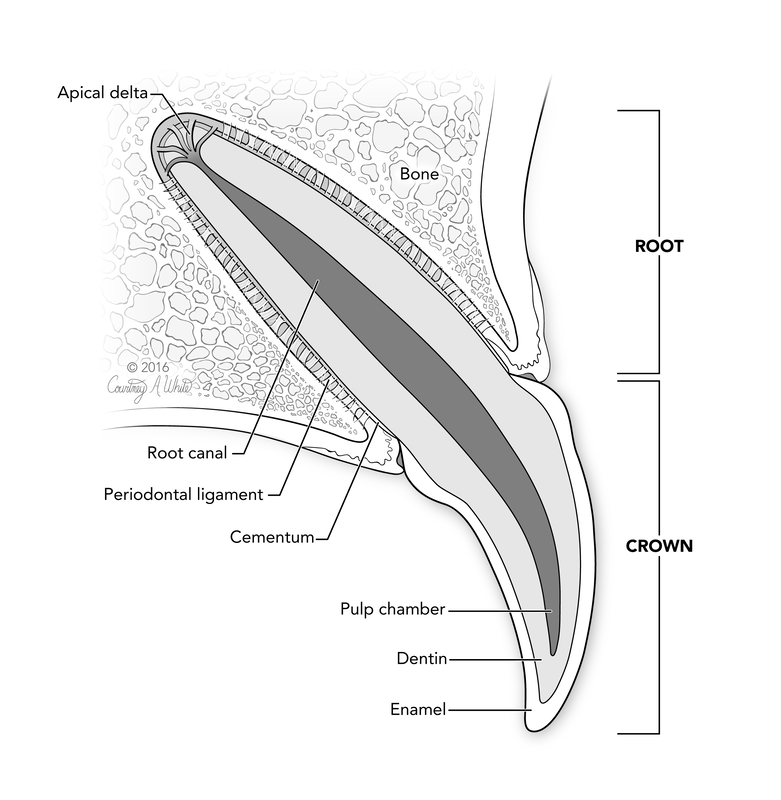
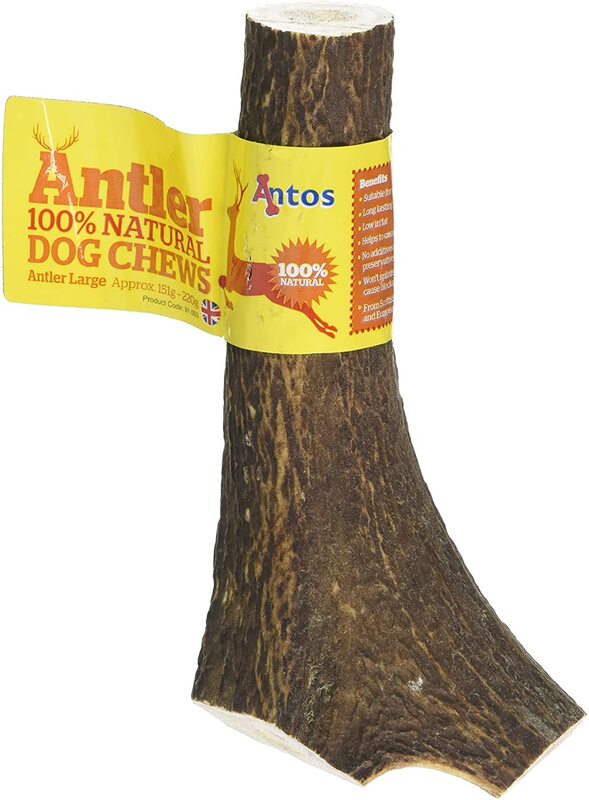
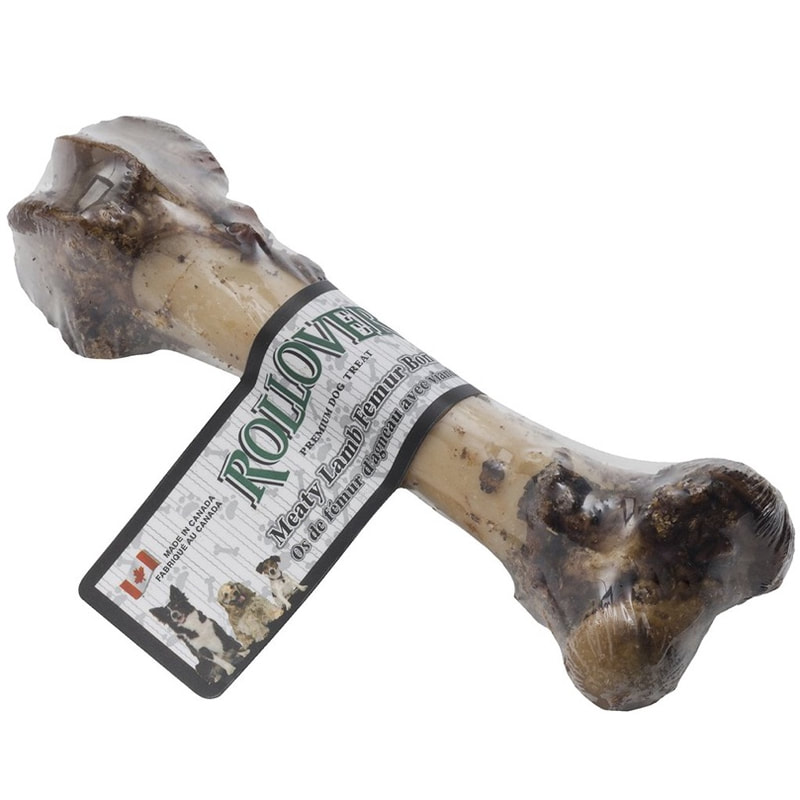

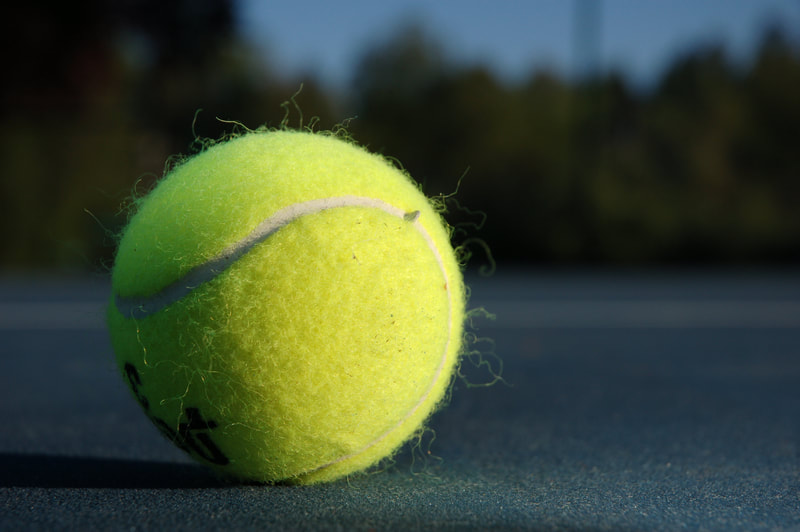

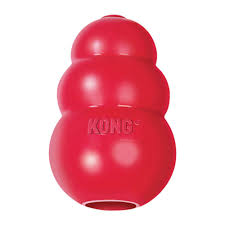
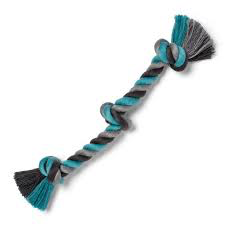
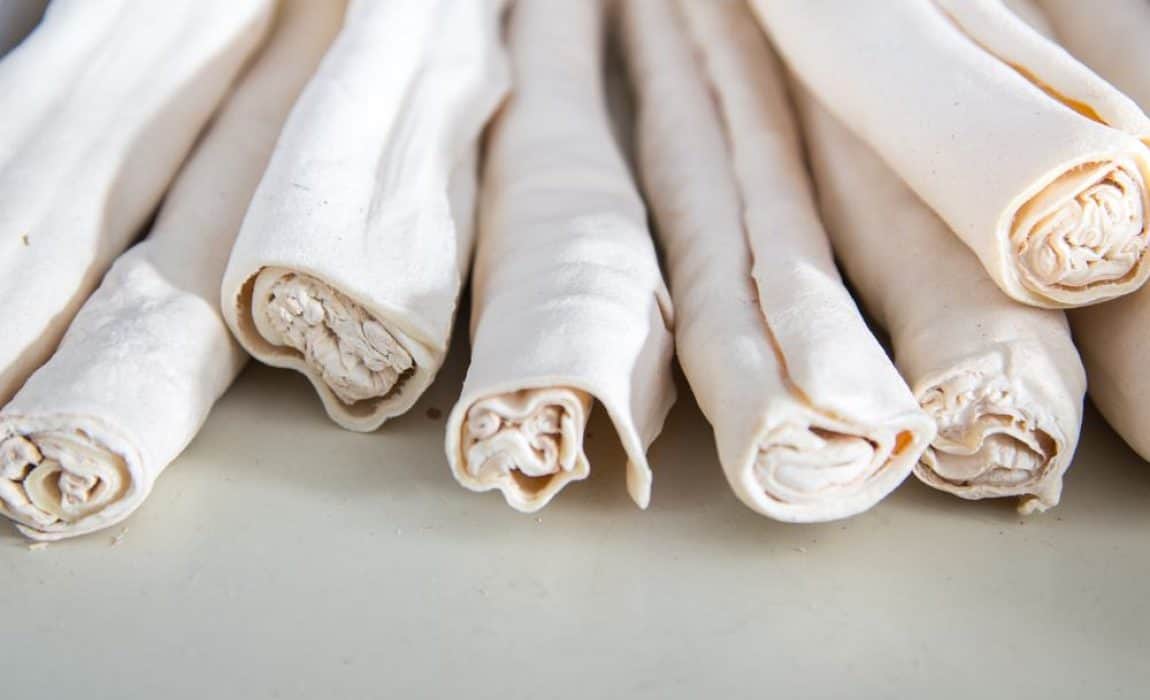
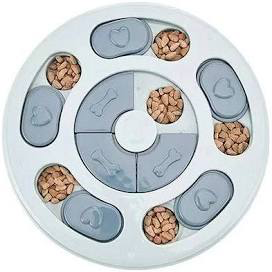
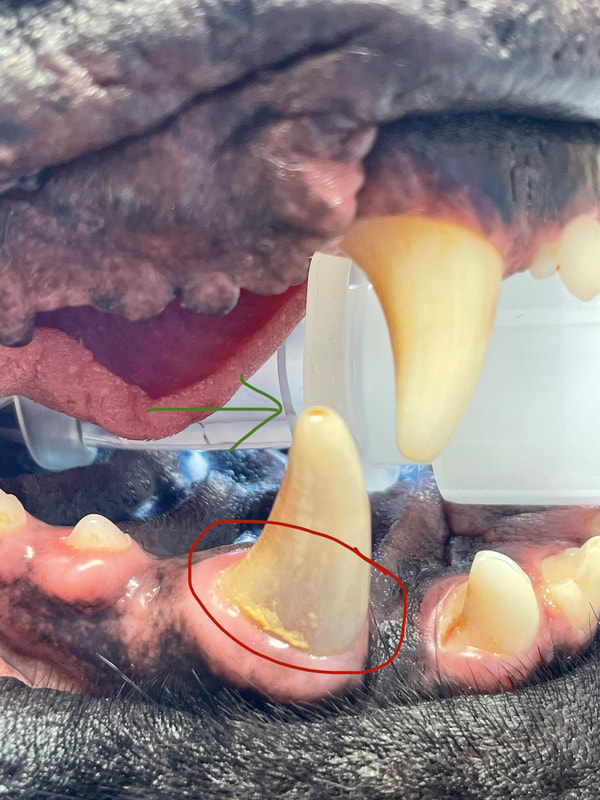
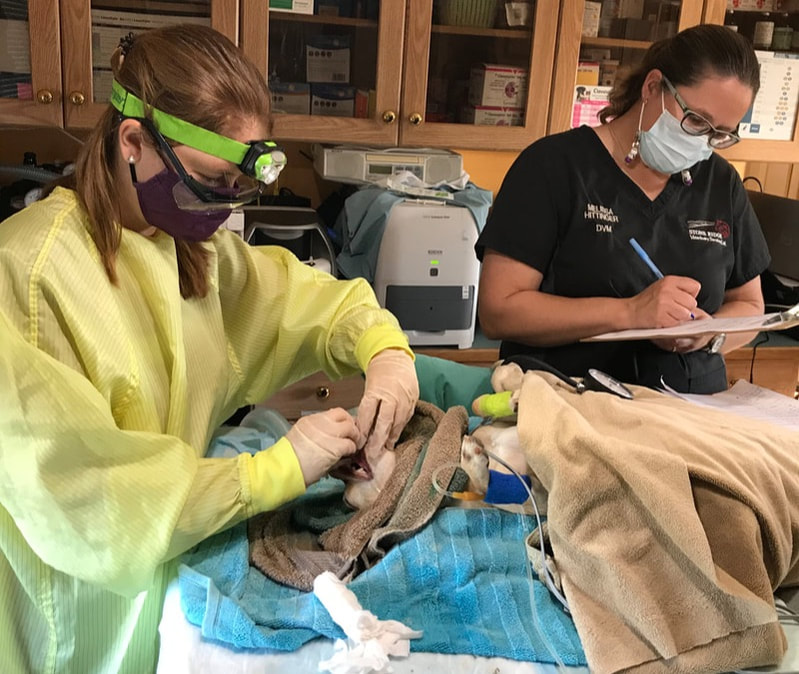
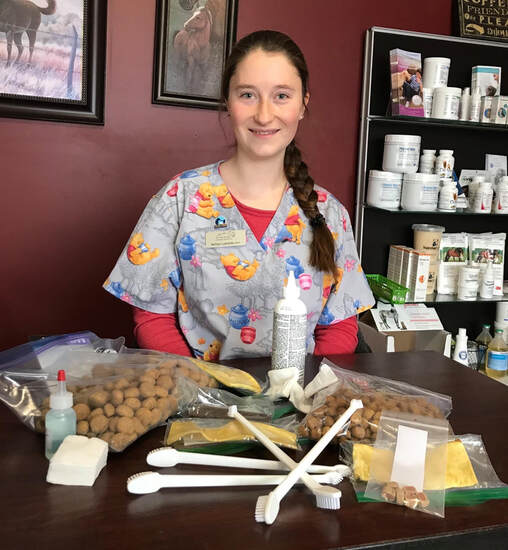

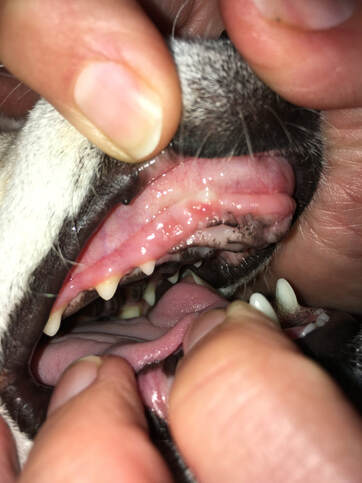
 RSS Feed
RSS Feed